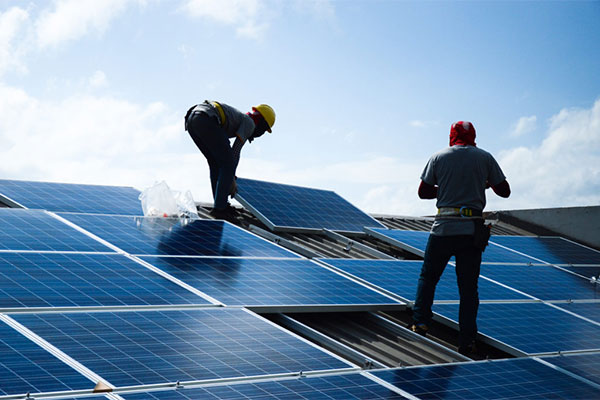It was reported that there has been a 44% increase in primary energy consumption across the globe over the past 16 years (statista.com). As such, we are not likely going to make a drastic departure from our behavior of having high-powered homes and frequent use of transportation.
These technologies will allow us to curb energy usage without having to alter our accustomed style of living.

Infographic submitted by Mitch James, Communications Director at SaveOnEnergy. This article was originally published by SaveOnEnergy
Infographic transcription:
Saving at Home
Residential Energy Consumption
Since 2012, total energy consumption in the residential sector has increased by 8.86%. Finding new ways to save energy at home is now becoming a primary objective among technology innovators.
Saving Money
From everyday electronics to sources of heat and power, there are many factors involved in a home’s overall energy usage. These new technologies are aimed at helping people save money by conserving the amount of energy their homes use during the day.
Tesla’s New Powerwall Home Battery
While the battery asks a high up-front cost, it promises large potential long-term savings with its ability to generate and store solar energy as electricity. Using energy generated by solar panels, Powerwall can fortify a home against power outages by acting as a backup electricity supply and offering independence from the utility grid.
Tesla Powerwall replaces your primary energy, saving you up to $500 a year.
Smart Thermostats
A self-programming smart thermostat builds your temperature preferences into a schedule, allows for smartphone integration, and provides monthly savings reports.
Advanced Light Bulbs
Induction Powered Light Bulbs
Induction Powered Light Bulbs use 75% less energy than incandescent light bulbs, last 15 times longer, and have a lifespan of 15,000 hours.
CFLs (Compact Fluorescent Light Bulbs)
These light bulbs use 70% less energy than incandescent light bulbs, last years longer, and can be purchased for less than two dollars a bulb.
LEDs Light Emitting Diodes
Light Emitting Diodes use 90% less energy than incandescent light bulbs and last up to 50,000 hours, or five times longer than comparable bulbs. These lightbulbs also heat up slower, which reduces the risk of a fire hazard.
Halogen Incandescents
Halogen Incandescent light bulbs use 25-35% less energy than traditional incandescent bulbs, last up to 1.8 years longer, and also provide a nostalgic feel, based on their glow.
Saving on the Road
In 2015, the transportation sector of the United States, alone, consumed 15,981 Trillion BTUs. This sector is behind only the industrial sector (18,212 Trillion BTUs) in total energy consumption.
A major factor in the transportation sector is the energy used to power cars and highways. Finding new ways to save energy in this sector will be imperative to conserving natural resources and avoiding waste and high energy costs.
The following technologies are being developed to curb energy usage among drivers and highway technology.
Solar Roadways
Equipped with built-in LED lights, solar roadways were commissioned by the Federal Highway Administration to create a clean source of renewable energy. These roadways use solar panels and highway technology with 18.5% efficiency. The panels are designed to last a minimum of 20 years and can withstand up to 250,000 pounds.
These roadway panels are built to withstand temperatures of up to 257 degrees Fahrenheit, and melt snow and ice on contact, preventing roadway accidents.
Glow in the Dark Road Markings
Glow in the dark road markings use lines made of glow-in-the-dark paint to illuminate the roads at night.
Currently being implemented in the Netherlands, these road markings can glow for 10 hours and allow for the removal of street lamps along the road.
Electric Priority Lanes
Electric priority lanes charge cars while on-the-go by using embedded magnets. These lanes are currently being tested in Germany and help to increase the duration of electric batteries for a longer driving time on the road.
Interactive Light
Motion-sensor road lights light up when cars approach, and fade as traffic clears. These are built into the roadway and can provide long-term energy savings.
















Comments